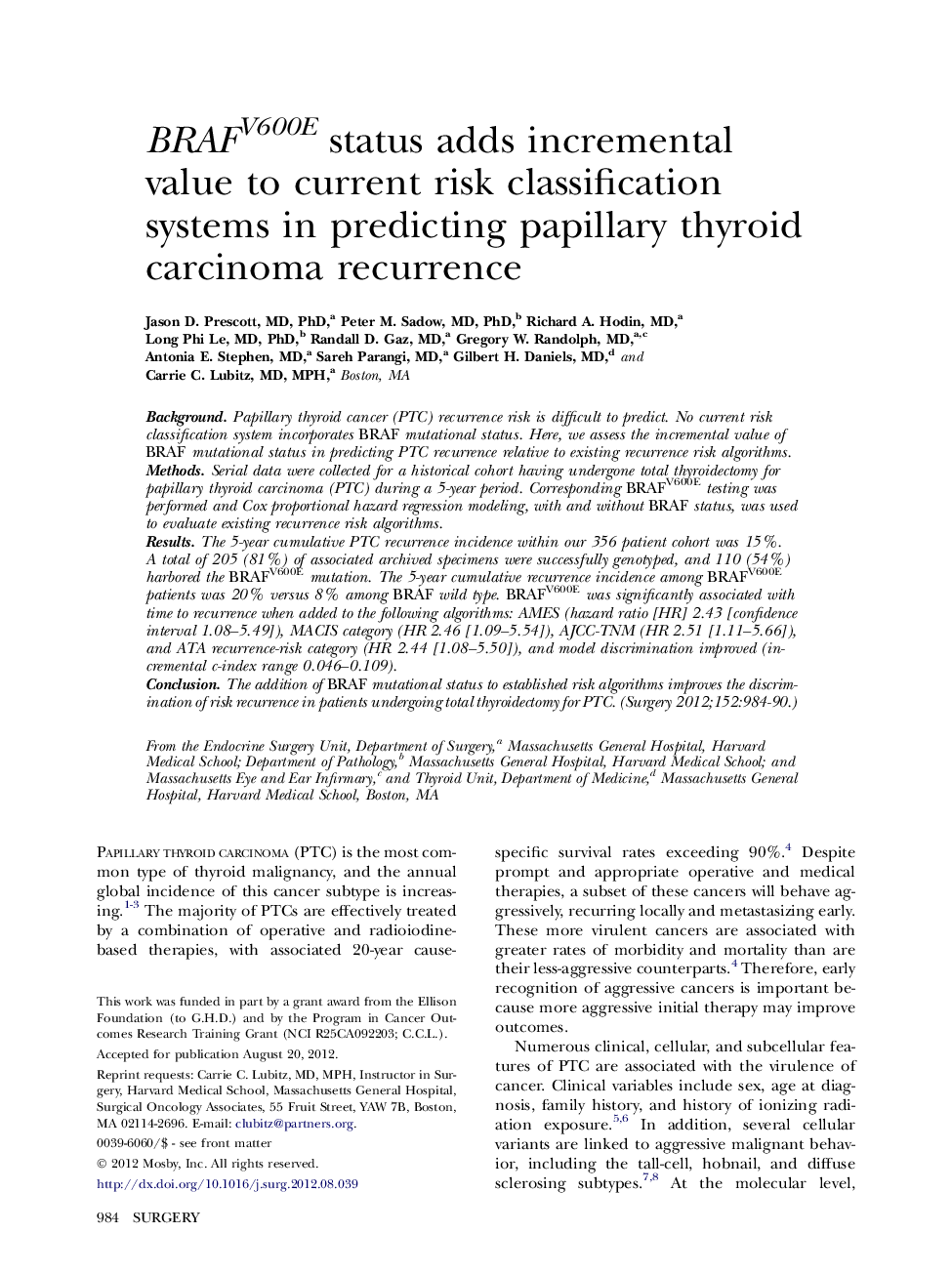| Article ID | Journal | Published Year | Pages | File Type |
|---|---|---|---|---|
| 4307715 | Surgery | 2012 | 7 Pages |
BackgroundPapillary thyroid cancer (PTC) recurrence risk is difficult to predict. No current risk classification system incorporates BRAF mutational status. Here, we assess the incremental value of BRAF mutational status in predicting PTC recurrence relative to existing recurrence risk algorithms.MethodsSerial data were collected for a historical cohort having undergone total thyroidectomy for papillary thyroid carcinoma (PTC) during a 5-year period. Corresponding BRAFV600E testing was performed and Cox proportional hazard regression modeling, with and without BRAF status, was used to evaluate existing recurrence risk algorithms.ResultsThe 5-year cumulative PTC recurrence incidence within our 356 patient cohort was 15%. A total of 205 (81%) of associated archived specimens were successfully genotyped, and 110 (54%) harbored the BRAFV600E mutation. The 5-year cumulative recurrence incidence among BRAFV600E patients was 20% versus 8% among BRAF wild type. BRAFV600E was significantly associated with time to recurrence when added to the following algorithms: AMES (hazard ratio [HR] 2.43 [confidence interval 1.08–5.49]), MACIS category (HR 2.46 [1.09–5.54]), AJCC-TNM (HR 2.51 [1.11–5.66]), and ATA recurrence-risk category (HR 2.44 [1.08–5.50]), and model discrimination improved (incremental c-index range 0.046–0.109).ConclusionThe addition of BRAF mutational status to established risk algorithms improves the discrimination of risk recurrence in patients undergoing total thyroidectomy for PTC.
